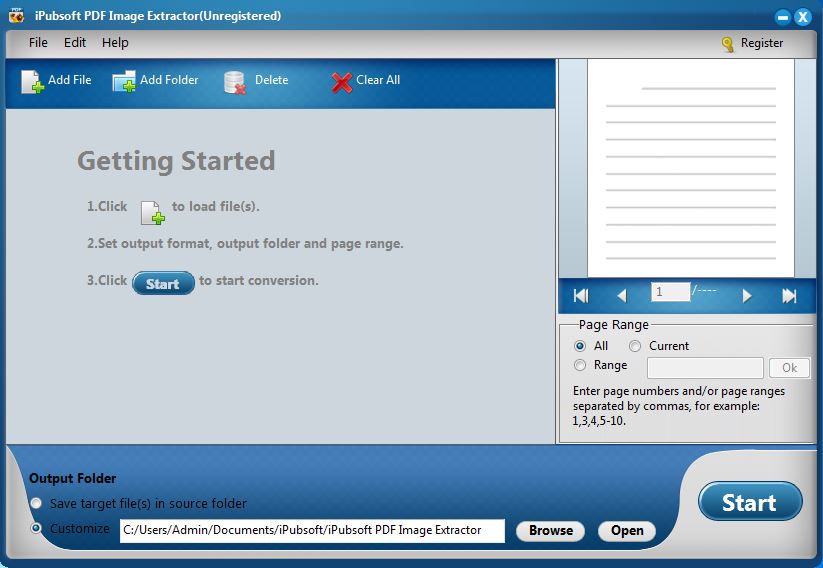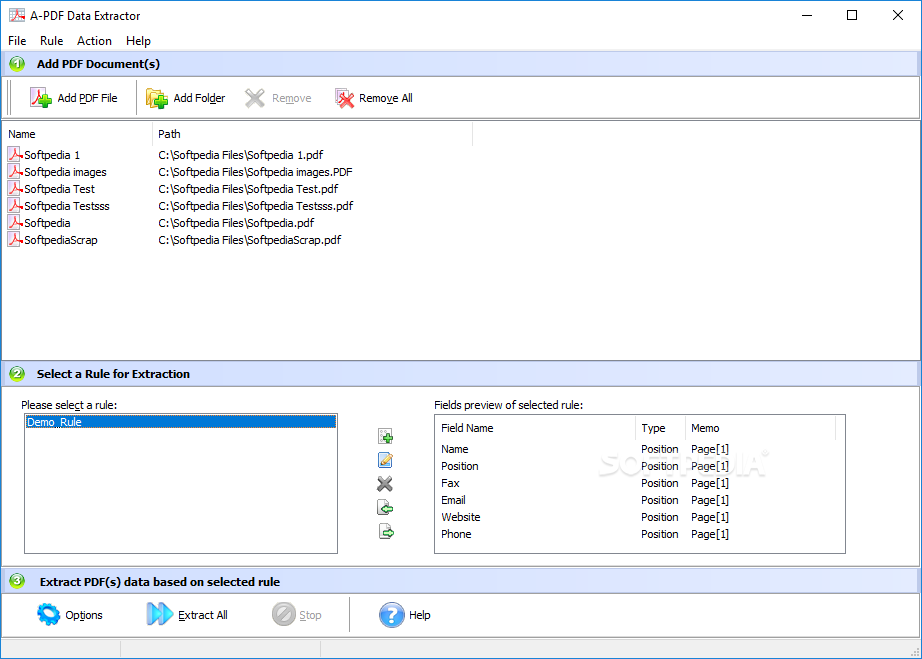

- Best pdf image extractor how to#
- Best pdf image extractor full#
- Best pdf image extractor portable#
While some users might try to screenshot, crop, and save one image at a time, you don’t have to. The setup of this format makes it quite challenging to extract pictures from PDF.

Perhaps you want to keep an infographic for future reference or send a collection of pictures to a friend. However, there are times when we want to extract images from PDF. The clean layout and editing restrictions make it ideal for multipurpose use.
The most common and convenient way of sharing this kind of info is through a Portable Document Format, or PDF.

Information is constantly changing hands, whether it’s in a community flyer, a company’s financial report, or a how-to booklet.
If the PDF is password-protected to prevent modification or extraction of content, you may be able to get around that by extracting the page with Inkscape, saving it as an unprotected file, then opening in Adobe Acrobat and passing the image to Photoshop or opening it in Nitro PDF and passing it to GIMP.If the question of how to extract images from PDF is opened for you, then this article will guide you through it. (Caveat: where the originals are between 300 & 450 ppi they’re often not downsampled to the 300 target, and moreover black-and-white “linework” images, one bit deep, are often kept at 1200 ppi or more.) Some PDF readers can tell you the resolution for documents created using typical “print quality“ settings, 300 ppi is probably the best guess. You can also simply right click a single image and choose “Extract Image…”. All images are now automatically extracted (as PNG images) in the folder.
Inkscape, simply deselect “Embed (all) images” on the opening dialog. In short, it equivalent to the screenshot approach, but less work. It provides no guidance on the ideal resolution for a given image, and it essentially renders the whole page before converting everything to an image. This is not quite the same as extracting the images. GIMP can also open pages from a PDF as an image at the resolution you specify.  Get pieces via PrintScreen and stitch them together in Microsoft Paint, GIMP, or a similar third-party program. PDF Candy can be used to extract images online. Evince, the most common Linux PDF reader, simply lets you right-click on an image and save it. However, it won't work if the PDF is password-protected. Nitro PDF has a function to pull all images out of a PDF file at full resolution, and you can choose the output format (jpg, png, etc). For example: pdfimages -all '/path/to/your.pdf'. Use the -j option to losslessly extract JPEG-compressed images, or -all to losslessly extract all images in their original file type. pdfimages command-line tool in the xpdf package. Possible ways to extract images from PDFs include: PDF files can contain images that are actually at a higher resolution than the “100%” size of the document. ImageMagick's convert can split a PDF into single images of pages it's free. PDFCreator can export PDF in several bitmap formats. To SVG: use pdf2svg (Linux: pdf2svg) to convert to an SVG if the entire PDF file should be used as an image, e.g., if it is a diagram generated by some program. Use freely available programs PDF-XChange Viewer (File -> Export -> Export to Image) or STDU Viewer (File -> Export -> to image). Use XPdf command line tools pdfimages, pdftopng, pdftoppm, pdftops or XPdf Reader (File->Save Image). Pages in a PDF file are often stored as images, in scanned books, for example.
Get pieces via PrintScreen and stitch them together in Microsoft Paint, GIMP, or a similar third-party program. PDF Candy can be used to extract images online. Evince, the most common Linux PDF reader, simply lets you right-click on an image and save it. However, it won't work if the PDF is password-protected. Nitro PDF has a function to pull all images out of a PDF file at full resolution, and you can choose the output format (jpg, png, etc). For example: pdfimages -all '/path/to/your.pdf'. Use the -j option to losslessly extract JPEG-compressed images, or -all to losslessly extract all images in their original file type. pdfimages command-line tool in the xpdf package. Possible ways to extract images from PDFs include: PDF files can contain images that are actually at a higher resolution than the “100%” size of the document. ImageMagick's convert can split a PDF into single images of pages it's free. PDFCreator can export PDF in several bitmap formats. To SVG: use pdf2svg (Linux: pdf2svg) to convert to an SVG if the entire PDF file should be used as an image, e.g., if it is a diagram generated by some program. Use freely available programs PDF-XChange Viewer (File -> Export -> Export to Image) or STDU Viewer (File -> Export -> to image). Use XPdf command line tools pdfimages, pdftopng, pdftoppm, pdftops or XPdf Reader (File->Save Image). Pages in a PDF file are often stored as images, in scanned books, for example.








 0 kommentar(er)
0 kommentar(er)
